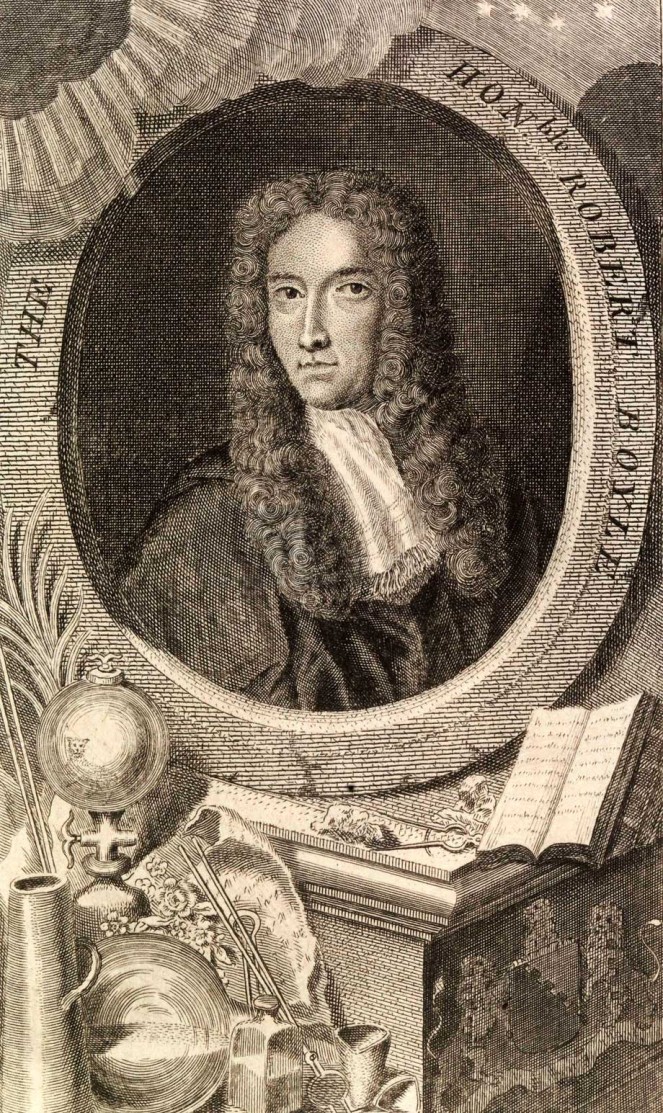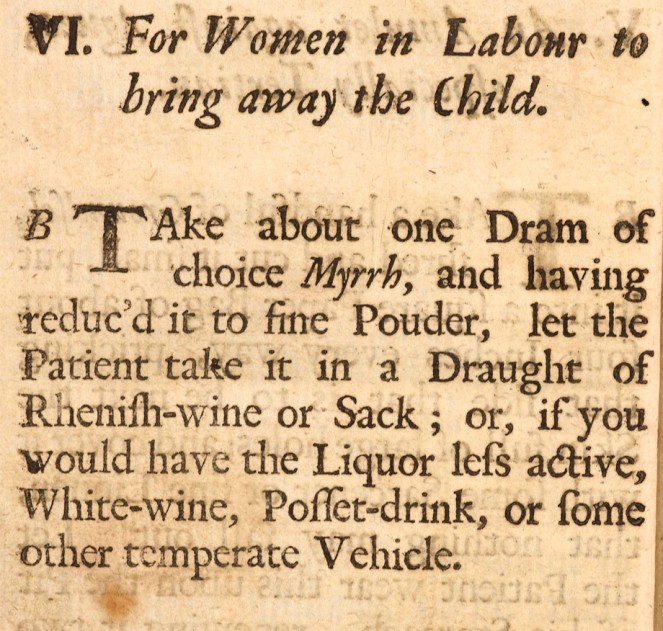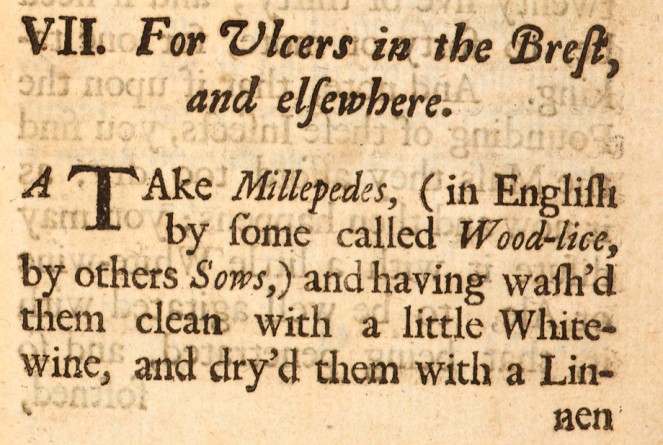by Aoife O Connor, co-curator of Particles of the Past exhibition
In deciding what to put into our Discover: Particles of the Past exhibition for Dublin City of Science 2012, Robert Boyle was top of the list. We have an excellent collection of his published works and he’s a well known and important figure in the history of science.

Robert Boyle, engraving by F.M. La Cave, ca. 1753. NLI ref. EP BOYL-RO (2) I
Turns out he was also a bit of a hypochondriac, although he knew who and where to blame!
I may represent, that being the thirteenth or fourteenth child of a mother, that was not above 42 or 43 years old when she dyed of a consumption, ‘tis no wonder I have not inherited a robust or healthy constitution. Many also have laid, in my excuse, as they think, that I brought myself to so much sickness by over much study… [but!] for the grand original of the mischiefs that have for many years afflicted me, was a fall from an unruly horse into a deep place, by which I was so bruised that I feel the bad effects of it to this day. For this mischance happening in Ireland, and I being forc’d to take a long journey before I was well recovered, the bad weather I met with and the as bad accommodation in the Irish Inns and the mistake of an unskilful and drunken guide who made me wander almost all the night upon some wild mountains put me into a fever and a dropsie.
As a natural philosopher he dealt with his hypochondria by collecting medical recipes and testing them on himself, something his friends were not very keen on as this led him to imagine new illnesses and self-medicate rather than consulting doctors.
Boyle collected recipes from friends and these were published after his death. In his introduction to the recipes, Boyle is at pains to point out that he is not a doctor but he felt it was important that he provide remedies as might “be made serviceable to poor country people”.
The recipes are graded A, B and C…
whereof A is the mark of a remedy of the highest classes of these, recommended as very considerable and efficacious in its kind, B denotes a second or inferior sort but yet to be valuable for their good operations. C belongs to those remedies that are of the lowest order, tho’ good enough not to be despised.
Let’s have a look at a Class C recipe:
To appease the heat of Feavers by an External Remedy.
Apply to the Soles of the Feet a mixture or thin cataplasm made of the Leaves of Tobacco, fit to be cut to fill a Pipe with, beaten up with as much of the freshest Currans you can get, as will bring the Tobacco to the Consistency of a Poultis.

To appease the heat of Feavers from Medicinal Experiments by the Honorable R. Boyle, Esq; Fellow of the Royal Society, London, 1692. NLI ref. LO 4365
Dried fruit and tobacco were desirable and expensive items in the 17th century. Early medicine often made use of exotic or luxury goods in small quantities, as though their very rarity and expense imbued them with medicinal qualities. Other recipes use spices and sugar. So far, so sticky and smelly.
How about a B recipe:
For Women in Labour to bring away the Child.
Take about one Dram of choice Myrrh and having reduc'd it to a fine Pouder, let the Patient take it in a Draught of Rhenish-wine or Sack; or, if you would have the Liquor less active, White-wine, Posset-drink, or some other temperate Vehicle.

For Women in Labour from Medicinal Experiments by the Honorable R. Boyle, Esq; Fellow of the Royal Society, London, 1692. NLI ref. LO 4365
I imagine the alcohol would be quite welcome. Again the Myrrh reflects the use of exotic items in remedies. Myrrh and other resins were used medicinally both as incense and, as seen here, as part of a draught or pill.
And finally an A remedy:
For Ulcers in the Brest and elsewhere.
Take Millepedes (in English by some called Wood-lice, by others Sows,) and having wash'd them clean with a little White-wine, and dry'd them with a Linen Cloth, beat them very well in a Glass or Marble Mortar (for they ought not be touch'd with any thing of Metal) and give the first time as much Juice, as you can by strong Expression obtain from five or six of them. ... And note, that if upon the Pounding of these Insects, you find the Mass they afford too dry, as it now and then happens; you may dilute it with a little White-wine or Ale...

For Ulcers in the Brest, and elsewhere from Medicinal Experiments by the Honorable R. Boyle, Esq; Fellow of the Royal Society, London, 1692. NLI ref. LO 4365
I have no words…
P.S. You can see the first volume of Boyle’s Medicinal Recipes in our exhibition Discover: Particles of the Past at 2 Kildare Street, Dublin from Wednesday, 9 February 2012.

